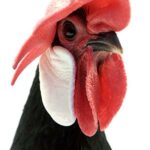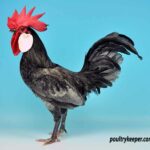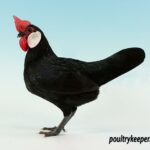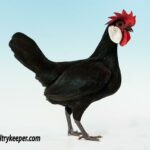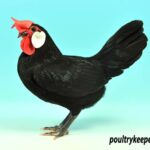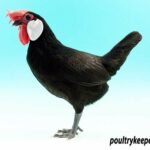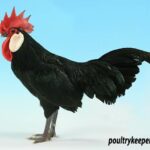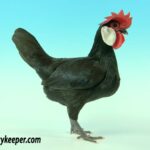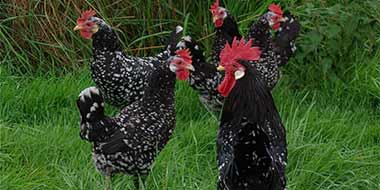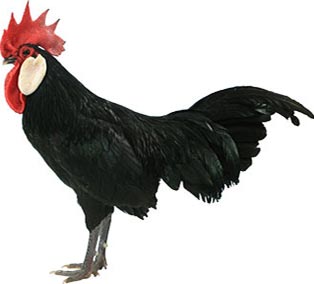
Uses: Utility – Eggs / Exhibition.
Origin: Mediterranean.
Eggs: 170 – 220 White.
Weight: Cock: 3.2 – 3.6 Kg. Hen: 2.7 – 3.2 Kg.
Colours: Black, Blue, White.
Useful to Know: Excellent layers of some of the largest white eggs. They will not usually go broody. A breed that enjoys foraging and free range and will rarely be worried about aerial predators. They are hardy although can suffer from frostbite of the comb in colder weather.
Photo: A Black Minorca male owned by R. Windsor.
Minorca Chickens were made into a Standard breed in England but the main breeds that had a hand in their make up are believed to have come from the Mediterranean. Minorcas get their name from the island of Menorca of the coast of Spain and it is believed they came to Spain from Africa, with the Moors. In Spanish history books, there are references to “Moorish fowl”. An alternative history is that these fowl arrived in Spain from Italy with the Romans.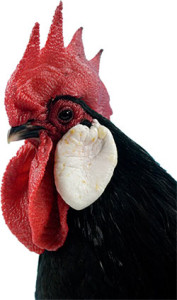
They arrived in England in the West Country when Spanish Prisoners of War from the Colonial Wars decided to stay after their release. Most old poultry texts call Minorca’s ‘Red Faced Spanish’ and considered them a sub-variety of the Spanish chicken breed. They seemed to remain unchanged until Northern fanciers took an interest in increasing their size for exhibiting who are believed to have crossed them with Langshans or Orpingtons. Evidence of this can be seen by their greenish-black plumage. As the breed was spread around the country, there were other breeders who also had a part in changing their appearance.
In the British Poultry Standard, the Minorca is the largest in the ‘Light Breed’ class and in the American Standard of Perfection, the largest of the ‘Mediterranean’ class.
Photos
Books
The following books are available. Links take you to the Amazon or other sellers’ pages for the books.
- Popular Poultry Breeds – D. Scrivener – P.131
- Storey’s Illustrated Guide to Poultry Breeds – C. Ekarius – P.63
- British Poultry Standards – P.177
- American Standard of Perfection – P.123
Breed Clubs
These are the breed clubs for Minorca chickens:
- UK: The Minorca Club

